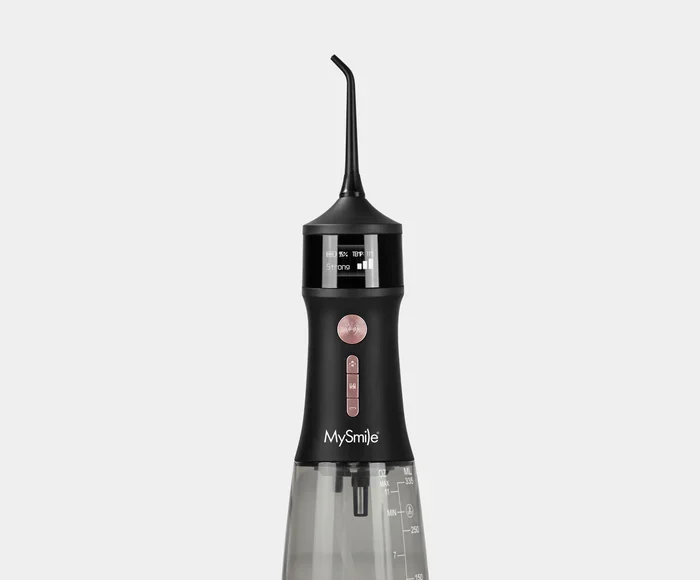In the realm of oral hygiene, the water flosser has emerged as a popular tool for enhancing dental care routines. Known for its ability to effectively remove plaque and debris from between teeth and along the gumline, a water flosser offers a gentle yet powerful alternative to traditional string floss. This article delves into what a water flosser is, how it operates, its benefits, and tips for choosing the right one for your dental care needs.
What Is a Water Flosser?
A water flosser, also known as an oral irrigator or dental water jet, is an electrical device designed to clean between teeth and along the gumline using a stream of pulsating water. Unlike traditional floss, which relies on physical friction to remove food particles and plaque, a water flosser utilizes pressurized water to disrupt plaque biofilm and flush out debris. This tool is particularly beneficial for individuals with braces, implants, or those who find traditional flossing challenging.
Components of a Water Flosser
A typical water flosser consists of the following components:
Water Reservoir: The container that holds water, typically removable for easy refilling.
Motor: Powers the device and generates the pulsating water stream.
Pressure Control: Allows users to adjust the water pressure for comfort and effectiveness.
Nozzle or Tip: Directs the stream of water; interchangeable tips may be available for specific uses, such as orthodontic care or periodontal health.
Power Supply: Most water flossers are electric and can be plugged into an outlet, while some models offer battery-operated options.
How Does a Water Flosser Work?
Understanding how a water flosser works is essential for maximizing its benefits. Here’s a step-by-step explanation of the operation:
Fill the Reservoir
The first step in using a water flosser is to fill the water reservoir with warm water. Many users find warm water more comfortable, especially if they are sensitive to temperature. Some models also allow the addition of mouthwash to enhance freshness, but this should be done according to the manufacturer’s guidelines.
Select the Nozzle and Adjust Pressure
Next, users attach the appropriate nozzle to the device. Many water flossers come with multiple tips designed for different needs, such as orthodontic care or general use. After selecting the nozzle, the water pressure can be adjusted. Beginners may want to start with a lower setting to get accustomed to the sensation.
Position the Flosser
Position the water flosser in your mouth, ideally over the sink to avoid splashing. It’s essential to close your lips around the nozzle to create a seal but leave a small gap for the water to flow out.
Activate the Water Flosser
With the nozzle in place, turn on the water flosser. The pulsating stream of water will begin to flow, and users should guide the nozzle along the gumline and between teeth. It’s recommended to start from the back of the mouth and work towards the front, pausing briefly between each tooth to ensure thorough cleaning.
Rinse and Clean Up
Once finished, users can turn off the device and rinse their mouth with water. It’s advisable to clean the reservoir and nozzle regularly to prevent bacterial growth. Following the manufacturer’s instructions for maintenance will help prolong the lifespan of the water flosser.
Benefits of Using a Water Flosser
Water flossers offer several advantages over traditional flossing methods, making them a valuable addition to oral hygiene routines. Here are some key benefits:
Improved Plaque Removal
Research indicates that water flossers can be more effective than traditional floss in removing plaque, particularly in hard-to-reach areas. The pulsating water disrupts biofilm and flushes out debris that might otherwise remain trapped between teeth.
Enhanced Gum Health
Regular use of a water flosser has been linked to improved gum health. By effectively cleaning the gumline, water flossers can reduce gingivitis and inflammation, leading to healthier gums.
Ideal for Orthodontics and Dental Work
Individuals with braces, implants, or other dental work often struggle with traditional flossing. Water flossers provide a gentle yet effective cleaning method that can navigate around brackets and wires without causing damage.
Easier to Use
For many, using a water flosser is more straightforward than traditional flossing. This ease of use can lead to better compliance with oral hygiene routines, particularly for children or those with limited dexterity.
Fresh Breath
By removing food particles and plaque, water flossers can contribute to fresher breath. Some users find that incorporating mouthwash into the water reservoir enhances this effect.
Choosing the Right Water Flosser
With numerous models available, selecting the right water flosser can seem daunting. Here are some factors to consider when making your choice:
Types of Water Flossers
There are two main types of water flossers:
- Countertop Models: These are larger units that typically offer more features, including adjustable pressure settings and larger water reservoirs. They are suitable for home use.
- Cordless or Portable Models: These compact options are battery-operated and ideal for travel. While they may have smaller reservoirs and fewer pressure settings, they offer convenience and portability.
Pressure Settings
Look for a model that offers multiple pressure settings. This feature allows users to customize the intensity of the water stream, making it more comfortable for sensitive gums.
Nozzle Variety
Consider a water flosser that includes various nozzle options. Specialized nozzles for orthodontic care, periodontal health, or tongue cleaning can enhance the effectiveness of your oral hygiene routine.
Reservoir Size
The size of the water reservoir is crucial, especially for users who prefer longer flossing sessions. Larger reservoirs can hold enough water for a thorough cleaning without needing frequent refills.
Ease of Cleaning
Choose a model with removable and dishwasher-safe parts for easy cleaning. Maintaining hygiene is essential to prevent bacteria buildup within the device.
Reviews and Recommendations
Before making a purchase, read customer reviews and seek recommendations from dental professionals. This feedback can provide valuable insights into the performance and durability of different water flosser models.
Tips for Using a Water Flosser Effectively
To maximize the benefits of a water flosser, follow these practical tips:
Use It Daily
Incorporate the water flosser into your daily oral hygiene routine. Consistency is key to achieving optimal results, and using it once a day can significantly enhance gum health and plaque removal.
Combine with Traditional Brushing
A water flosser should complement, not replace, traditional brushing. Use it after brushing your teeth to flush out any remaining debris and ensure a comprehensive clean.
Angle the Nozzle Properly
When using a water flosser, angle the nozzle towards the gumline to maximize effectiveness. Positioning the tip at a 90-degree angle can help target plaque and debris effectively.
Take Your Time
Allow sufficient time for the water flosser to clean each quadrant of your mouth. Rushing through the process may lead to missed areas and less effective cleaning.
Stay Hydrated
Drinking plenty of water throughout the day can promote overall oral health. Staying hydrated helps maintain healthy saliva production, which is essential for neutralizing acids and protecting teeth.
Regularly Replace Nozzles
Follow the manufacturer’s recommendations for replacing nozzles or tips. Regularly changing these components ensures optimal performance and hygiene.
Common Misconceptions About Water Flossers
Despite their benefits, some misconceptions about water flossers may prevent users from trying them. Here are a few common myths:
Water Flossers Are Just as Good as Flossing
While water flossers are effective, they do not completely replace traditional flossing. For some individuals, using both methods may yield the best results.
Water Flossers Are Only for People with Dental Work
Water flossers benefit everyone, regardless of dental conditions. They are particularly effective in cleaning areas that traditional brushing may miss, making them a valuable tool for anyone seeking to improve their oral hygiene.
They Are Too Complicated to Use
Most water flossers are designed for ease of use, making them accessible for individuals of all ages. Following the manufacturer’s instructions can help users feel comfortable and confident in their technique.
Conclusion
A water flosser is a powerful addition to any oral hygiene routine, offering numerous benefits for gum health and plaque removal. By understanding how a water flosser works and choosing the right model, you can enhance your dental care experience. With regular use and proper technique, a water flosser can help you achieve a brighter smile and improved oral health.







